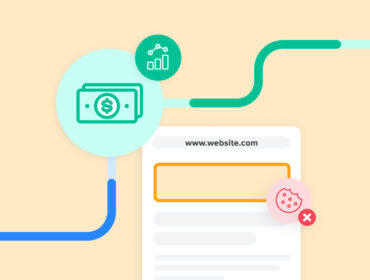5 steps to building a first-party data strategy
The New York Times recently announced that they’re phasing out third-party advertising data and going all-in on first-party data. To that end, they’ve already created a proprietary first-party data platform and built unique audience segments for brand partners.
This is great news for the Times, which will be well-prepared to navigate the death of the third-party cookie and reduce reliance on tracking pixels from other platforms like Facebook.
The problem is, of course, not every publisher has the data, resources, and budget of a legacy publication. So we asked Jay Glogovsky, senior director of revenue analytics and operations at The New York Times, for his basic building blocks for any publisher trying to create a first-party data strategy.
Here’s what Glogovsky had to say in our recent Real Time Banter webinar.
1. Recognize the need for first-party data
As the third-party cookie crumbles, publications need to cultivate their own first-party data and audiences to survive. Recognizing that need is the first step to building a workable strategy.
You don’t have to take our word for it, either – just ask your audience. As Glogovsky said, “We didn’t make this decision internally. We allowed our readers to make the decision for us.”
The Times surveyed its readers and asked if they’d be willing to share information about themselves to help create a better ad experience.
“The results were very positive and opened up a really awesome opportunity,” Glogovsky said. “We expect that as our subscribers and engaged readers grow daily, they’ll continue to provide more information about themselves and help us create better products and capabilities for our advertisers.”
2. Take inventory of the data you have
Before you start creating strategies to gather new streams of first-party data, audit the data sets you’ve already collected.
“Take inventory of what you have and ensure that it’s quality, accurate, and productizable,” Glogovsky said. “And be realistic about what kind of work it’s going to require and how many resources you’re going to need [to activate that data].”
3. Build planning and targeting tools
Make it easier for your publication and buyers to harness the power of first-party data by building tools for ad planning and targeting.
The Times, for instance, built a motivation-targeting product to reach people based on what they want to do while reading or after reading a piece of content. They also launched a perspective-targeting product to help advertisers reach people based on the emotions they’re going to feel when they’re reading content.
“We actually asked readers to tell us how they felt as they read a handful of articles,” Glogovsky said. “In the initial product launch, we had 150,000 unique inputs, which we used to build a model so we can now target similar content and have a really good understanding of how people are going to react to it.”
4. Train sales teams
The switch to prioritizing first-party data doesn’t just affect marketing and advertising teams. It requires a change in approach across the organization. Sales teams in particular will need to adjust the way they interact with direct buyers and sell ad-targeting capabilities.
“There’s a lot of training that needs to happen on your direct sales side,” Glogovsky said. “You’re going to have to unlearn things and relearn things and learn new things. That’s hard for any sales organization, especially with everything that’s changing every single day.”
5. Commit to this new venture
Changing your approach to consumer data and advertising can be scary, especially in today’s ever-changing market. But in order to succeed, you have to fully commit to a first-party data strategy.
“After you see that you have data that’s going to be useful in either a product or a capability, you have to commit to it – you can’t take a one-foot-in-one-foot-out approach,” Glogovsky said. “And it’s going to be hard. It’s going to be really difficult to get traction on it.”
When the Times launched its perspective targeting capability, for example, “there wasn’t a line out the door asking for it.” Instead, sales teams had to take a proactive approach and sell it through to advertisers.
Still, Glogovsky remains assured that the Times and early adopters won’t always be alone in their comprehensive commitment to first-party data – and together, they’ll experience some bumps along the way.
“I do fear that there could be some initial failures, and, for the betterment of the industry, I think we need to continue progressing despite them,” he said. “But I do think that this will be adopted and commercialized by more publishers, and I encourage it.”


